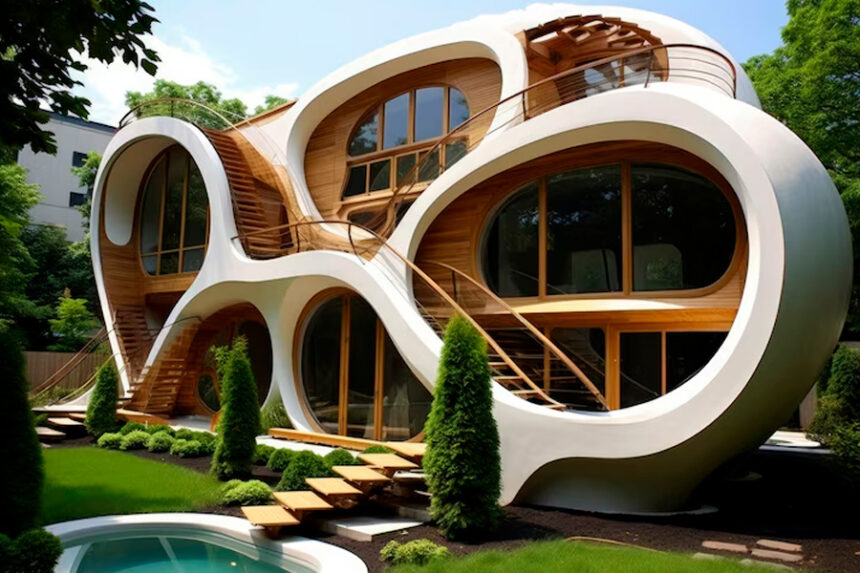In an era where land prices are soaring and urban living demands smarter utilization of every square foot, home building has evolved to prioritize space efficiency without compromising comfort or style. Whether constructing a cozy urban apartment or a sprawling suburban residence, the core challenge remains: how to make the most of available space through intelligent designs.
The Importance of Space-Conscious Home Building
As cities become denser, the ability to maximize space is no longer a luxury—it’s a necessity. Effective home building focuses not only on aesthetic appeal but also on practical livability. Clever designs can make small homes feel spacious and large homes feel more functional. This approach enhances everyday living and adds significant value to the property.
Open-Concept Layouts: Eliminating Unnecessary Barriers
One of the most popular home building designs for maximizing space is the open-concept layout. By removing unnecessary walls, this design philosophy creates fluid transitions between living, dining, and kitchen areas. The absence of visual barriers allows natural light to penetrate further, making rooms appear larger and more inviting.
Benefits of Open-Concept Designs
- Enhanced visual spaciousness.
- Increased social interaction.
- Flexibility in furniture arrangement.
Open layouts not only make small homes feel grander but also provide a modern, airy atmosphere that today’s homeowners crave.
Multi-Functional Rooms: Double-Duty Spaces
A cornerstone of efficient home building is the creation of multi-functional rooms. These spaces can easily adapt to serve various purposes throughout the day.
Examples of Multi-Functional Designs
- Home offices that double as guest rooms.
- Kitchens with built-in breakfast nooks that also function as study areas.
- Living rooms with convertible sofas or Murphy beds.
By integrating flexibility into the designs, homeowners can maximize both functionality and space, particularly in compact dwellings.
Smart Storage Solutions: Out of Sight, Not Out of Reach
A crucial aspect of space-maximizing home building designs is clever storage integration. Traditional standalone storage can consume valuable floor space, but modern designs embed storage seamlessly within the structure.
Popular Smart Storage Ideas
- Built-in shelves and under-stair storage.
- Floor-to-ceiling cabinetry.
- Hidden compartments within benches, beds, and ottomans.
Utilizing underused spaces such as walls, staircases, and even ceiling nooks enhances the practical square footage without cluttering the home.
Vertical Expansion: Building Up, Not Out
When horizontal space is limited, home building should turn to vertical expansion. Multi-story designs not only save land but also allow for creative zoning of living spaces.
Advantages of Vertical Designs
- Private zones on upper levels, communal zones on lower levels.
- Potential for rooftop gardens or terraces.
- Increased natural light access through stacked window placements.
Verticality is a smart way to preserve outdoor areas while still gaining substantial indoor space.
Sliding and Pocket Doors: A Game-Changer for Small Spaces
Conventional hinged doors require swing clearance that eats into room space. Replacing them with sliding or pocket doors is a subtle yet effective tweak in home building designs that can free up critical square footage.
Sliding doors can also act as versatile partitions, allowing rooms to either flow together or be closed off as needed, offering both openness and privacy.
Utilizing Mirrors and Glass for Optical Illusions
Strategic use of mirrors and glass elements is a time-tested technique in home building to enhance the perception of space. Large mirrors can double the visual size of a room, while glass partitions maintain sightlines without sacrificing functional separation.
Glass staircases, transparent balustrades, and glass-walled showers can further contribute to the spacious feel, creating an airy, unencumbered environment.
Minimalist Architecture: Less is More
The minimalist approach to home building designs focuses on clean lines, neutral color palettes, and reduced ornamentation. By stripping away excess, minimalist homes naturally appear more open and uncluttered.
Key features of minimalist designs:
- Streamlined furniture with hidden storage.
- Neutral tones that expand visual space.
- Simple, geometric forms that eliminate visual noise.
This style not only maximizes space but also promotes a calming, efficient atmosphere that modern homeowners increasingly appreciate.
Embracing Outdoor Living Spaces
An often-overlooked strategy in home building is to blur the boundaries between indoor and outdoor living. Patios, decks, balconies, and courtyards extend usable space and create the illusion of a larger footprint.
Smart Outdoor Designs
- Folding glass walls that open entirely to patios.
- Outdoor kitchens that expand entertainment zones.
- Cozy balconies with integrated seating and planters.
These designs encourage seamless flow and allow homeowners to enjoy their entire property, not just the enclosed rooms.
Lofted Spaces: Raising the Roof on Creativity
Lofts are an ingenious solution in home building designs that maximize vertical space. Whether used for sleeping, working, or lounging, lofts capitalize on otherwise underused airspace.
Popular loft applications include:
- Sleeping lofts in studio apartments.
- Elevated reading nooks.
- Home offices perched above living areas.
Loft designs add functional layers to a home without demanding additional ground-level square footage.
Compact Kitchen Efficiency
The kitchen is often the busiest room in any home, but it doesn’t need to be oversized to be effective. Efficient kitchen designs focus on functionality and smart storage.
Key Compact Kitchen Elements
- Galley-style layouts.
- Pull-out pantry shelves.
- Foldable or extendable counters.
When executed well, a compact kitchen in a home building project can be every bit as capable as a larger counterpart while conserving precious space.
Integrated Furniture: Built to Fit
Integrated or custom-built furniture is a growing trend in home building designs aimed at space maximization. These pieces are tailored to fit the exact dimensions of the home, eliminating dead spaces.
Examples include:
- Banquette seating with storage underneath.
- Custom desks that fit perfectly into alcoves.
- Platform beds with integrated drawers.
This approach ensures no inch is wasted while maintaining aesthetic cohesion throughout the home.
Flexible Partitioning: Adapting to Changing Needs
Incorporating movable partitions or sliding walls into home building allows homeowners to easily reconfigure their spaces as needs evolve.
Benefits of flexible partitions:
- Quickly switch between open-plan and segmented spaces.
- Adjust privacy levels.
- Accommodate guests without permanent structural changes.
Such designs are ideal for growing families, remote workers, and homeowners who desire adaptability in their living environments.
Skylights and Clerestory Windows: Bringing the Outdoors In
Natural light is a critical element in making spaces feel larger. Skylights and clerestory windows are powerful tools in home building designs to invite sunlight into compact areas.
Advantages:
- Reduced need for artificial lighting.
- Enhanced connection with the outdoors.
- Heightened sense of openness and airiness.
These features work exceptionally well in homes where external wall space is limited.
Utilizing Neutral and Light Color Schemes
Color plays a significant psychological role in how we perceive space. Light and neutral color palettes can make rooms feel expansive and less confined.
Effective designs often pair light-colored walls with reflective surfaces and strategic lighting to enhance the sense of openness.
The Role of Technology in Space Efficiency
Modern home building increasingly integrates smart home technology to optimize living spaces.
Technological innovations include:
- Retractable walls operated by remote control.
- Multi-purpose furniture with built-in tech features.
- Smart storage systems that adjust shelving configurations automatically.
These forward-thinking designs make living in smaller spaces not just possible but highly desirable.
Small Bathrooms with Big Potential
Small bathrooms can feel cramped, but with the right designs, they can still be luxurious and functional.
Tips for small bathroom optimization:
- Use wall-mounted sinks and toilets to free up floor space.
- Install glass shower enclosures instead of opaque ones.
- Incorporate vertical storage like tall cabinets or ladder shelves.
These smart choices enhance comfort without enlarging the footprint.
Tiny Homes: The Ultimate Space Challenge
The tiny home movement is the pinnacle of efficient home building designs. Every square inch must serve a purpose, often multiple purposes.
Key features:
- Fold-out tables and beds.
- Stairs with built-in drawers.
- Compact, multi-functional appliances.
Tiny homes push creativity to its limits, demonstrating that beautiful, practical living is achievable even in the smallest of spaces.
Conclusion
Maximizing space through smart home building designs is both an art and a science. Whether through open-concept layouts, vertical expansion, integrated storage, or flexible partitions, the goal is always the same: creating homes that feel spacious, functional, and harmonious regardless of their physical size.
Innovative designs not only solve spatial challenges but also contribute to more sustainable, enjoyable living environments. By thoughtfully balancing aesthetics and utility, modern home building is redefining what it means to live well in every corner of the home.




